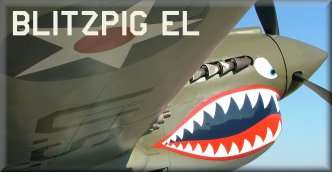
 |
|
#11
|
||||
|
||||
|
That would be interesting.
Most US torpedo bombers spent the majority of their service dropping bombs though. Aerial torpedo attack reached it's zenith with the attack on Pearl Harbor, I would think. Perhaps Google is our friend here....
__________________
 Personally speaking, the P-40 could contend on an equal footing with all the types of Messerschmitts, almost to the end of 1943. ~Nikolay Gerasimovitch Golodnikov |
|
#12
|
|||
|
|||
|
Quote:
A torpedo was an unusual load out. The Swordfish had a very good record against submarines .... 1940 U-64, 1941 U-451, 1942 U-577, U-652 +, U-589 +, 1943 U-203 +, U-89 +, U-752, U-617 +, 1944 U-472 +, U-366, U-973, U-653 +, U-288 +, U-277, U-674, U-959, U-765 +, U-344, U-394 +, U-365, 21 U-boats lost to Swordfish aircraft. + means that the Swordfish shared the credit for the sinking. |
|
#13
|
|||
|
|||
|
It also shared credit in the sinking of the Bismark..
|
|
#14
|
|||
|
|||
|
Some other interesting trivia ..
- Several flights of Swordfish were fitted with floats. - Rocket Assisted Takeoff was used operationally with the Swordfish. |
|
#15
|
|||
|
|||
|
About torpedoes launched to tons sunk, the problem would be for the americans at the early stage of the war till late 1942, when their torpedoes had very poor reliability compared to those of other nations.
I remember when the first silent hunter came out I've read an article about how they had problems with torpedoes sinking to low and going under the target, or hitting but not detonating, etc... |
|
#16
|
||||
|
||||
|
Yeah, except that the Bismark, being crippled, was scuttled to avoid capture, not sunk by enemy (British) fire. Shared credit in a crippling doesn't sound quite so glamourous, but it was enough.
I wonder what we'd have done with a captured Bismark? |
|
#17
|
|||
|
|||
|
Quote:
But in all seriousness yeah I've also read about how bad the Mark 13 was. Torpedo bombing was in itself such a dangerous occupation - flying low and slow in order to drop the torpedo. It couldn't have helped that the weapon they were using would only work on odd occasion.
__________________
Find my missions and much more at Mission4Today.com |
|
#18
|
|||
|
|||
|
I certainly wouldn't have liked to be a torpedo bomber pilot....
|
|
#19
|
|||
|
|||
|
The Swordfish was so low and slow it was actually hard to hit. They flew too close to the water for your typical high speed attack pass and flew too slow to safely dogfight particularly in planes like the fw190. The book "War in a Stringbag" describes how fw190 pilots regularly used flaps to get slow enough and even then had trouble hitting such a slow moving relatively manouverable target right on the water.
|
|
#20
|
|||
|
|||
|
Quote:
As far as the Swordfish were concerned, they were instrumental in the destruction of the ship. One of the torpedos they launched hit Bismarck's rudder and steering geer and jammed it. The ship then circled helplessly while the British pursuers caught up, and was unable to maneuver effectively to avoid the British fire. Without the Swordfish torpedo hit, the Bismarck would likely have escaped to a French port. The Swordfish may have been obselescent in terms of its performance, but it had an ability to land or takeoff in weather and sea conditions which would have been impossible for other Torpedo planes. This was a function of its extremely low stall/landing/takeoff speed. During the launch of the Swordfish's last attack on Bismarck, sea state was 5, wave height was 4 meters, and wind was blowing 50 kph. The Swordfish had its greatest moment at Taranto when it sank or disabled 3 Italian Battleships and one Cruiser. The negative result of this event was the Japanese were inspired to try the same technique at Pearl Harbour. Last edited by *Buzzsaw*; 12-16-2008 at 05:12 AM. |
 |
|
|